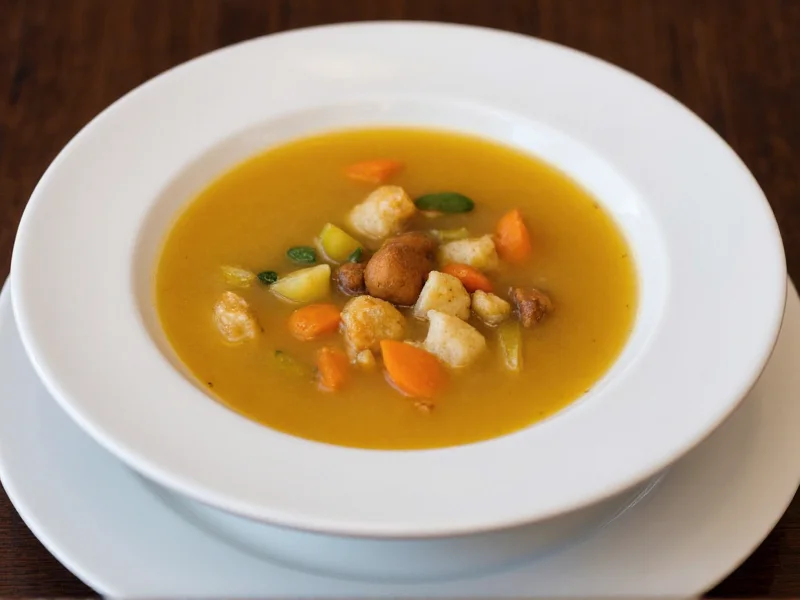Matzo ball soup, known as kreplach or kneidlach in Yiddish, stands as one of the most beloved comfort foods in Ashkenazi Jewish cuisine. This traditional soup features delicate dumplings made from matzo meal suspended in a clear, flavorful chicken broth. Whether you're preparing it for Passover, Shabbat, or simply seeking culinary comfort, mastering the perfect kneidlach requires understanding both technique and tradition.
The Secret to Perfect Kneidlach
Many home cooks struggle with dense or disintegrating matzo balls, but the solution lies in three critical factors: proper chilling time, the right liquid ratio, and gentle handling. Authentic traditional passover soup recipe techniques emphasize patience—rushing the chilling process leads to poor texture. The ideal matzo ball should float when cooked properly, indicating lightness rather than density.
Essential Ingredients for Authentic Flavor
While basic matzo ball soup from scratch requires few ingredients, each plays a crucial role in the final texture and flavor:
| Ingredient | Traditional Use | Modern Substitution |
|---|---|---|
| Matzo meal | Finely ground unleavened bread | No suitable substitute |
| Eggs | Binding agent and leavening | None for authentic texture |
| Schmaltz | Traditional rendered chicken fat | Vegetable oil or melted butter |
| Seltzer water | Creates air pockets for lightness | Club soda or plain water |
Step-by-Step Preparation Guide
Follow these detailed instructions for light and fluffy matzo ball recipe success every time:
- Whisk 4 large eggs with 1/4 cup schmaltz or vegetable oil until well combined
- Mix in 1 cup matzo meal, 1 teaspoon salt, and optional 2 tablespoons seltzer water
- Cover bowl and refrigerate mixture for at least 30 minutes (up to 2 hours)
- Bring large pot of well-seasoned chicken soup to gentle simmer
- Moisten hands with cold water and form 1-inch balls (don't pack tightly)
- Gently drop balls into simmering soup, cover pot immediately
- Cook undisturbed for 30-40 minutes (do not lift lid during first 20 minutes)
- Remove with slotted spoon once balls have doubled in size and float
Avoiding Common Matzo Ball Mistakes
Even experienced cooks make errors with how to make perfect kneidlach. The most frequent issues include:
- Overmixing - Creates dense, tough matzo balls; mix until just combined
- Insufficient chilling - Leads to disintegration in broth; minimum 30 minutes required
- Poor broth temperature - Boiling broth breaks apart balls; maintain gentle simmer
- Incorrect matzo meal amount - Too little causes falling apart, too much creates density
Serving Your Traditional Jewish Comfort Food
The perfect best chicken soup with matzo balls balances clear broth with tender vegetables and properly textured dumplings. For authentic presentation:
- Serve matzo balls in wide, shallow bowls to showcase the clear broth
- Place 2-3 matzo balls per serving with generous ladle of broth and vegetables
- Garnish with fresh dill or parsley for color contrast
- Offer extra salt and pepper at the table for customization
Storage and Reheating Instructions
Properly stored matzo ball soup preparation tips ensure leftovers maintain quality:
- Refrigerate broth and matzo balls separately for up to 3 days
- Freeze cooked matzo balls in broth for up to 2 months
- Reheat gently over medium-low heat without boiling
- Add frozen matzo balls directly to simmering broth without thawing
Variations Across Jewish Communities
While the authentic jewish matzo ball soup recipe remains consistent in core ingredients, regional variations exist:
- Ashkenazi (Eastern European) - Lighter "floaters" using seltzer water
- German Jewish - Denser "sinkers" with minimal liquid
- Modern American - Herb-infused variations with dill or parsley
- Passover-specific - Strictly unleavened ingredients without baking powder
Why This Recipe Works for Beginners
This easy homemade matzo ball instructions approach eliminates common pitfalls through precise measurements and clear technique explanations. The 1:4 egg-to-matzo meal ratio creates ideal binding without density, while the chilling requirement ensures proper texture development. Unlike many online recipes that suggest baking powder (not traditional for Passover), this method relies on proper technique rather than chemical leaveners for lightness.
Frequently Asked Questions
Why do my matzo balls keep falling apart?
Matzo balls typically fall apart due to insufficient chilling time or incorrect liquid ratio. Ensure you refrigerate the mixture for at least 30 minutes before shaping, and maintain the proper 1 cup matzo meal to 4 eggs ratio. Using schmaltz instead of oil can also improve binding properties.
Can I make matzo balls ahead of time?
Yes, you can prepare matzo balls up to two days in advance. Store uncooked mixture covered in the refrigerator, or cook the matzo balls and store them separately from the broth. Reheat gently in simmering soup just before serving to maintain texture.
What's the difference between schmaltz and oil in matzo balls?
Schmaltz (rendered chicken fat) provides richer flavor and better binding properties than vegetable oil, resulting in more traditional texture. While oil creates lighter matzo balls, schmaltz yields a more authentic taste and slightly denser, moister texture preferred in many traditional recipes.
Why do some recipes call for seltzer water?
Seltzer water introduces carbonation that creates tiny air pockets in the matzo ball mixture, resulting in lighter, fluffier dumplings that float when cooked. The bubbles expand during cooking, giving the characteristic light texture of well-prepared kneidlach without using non-traditional leaveners.
How can I prevent my matzo balls from becoming too dense?
To avoid dense matzo balls, don't overmix the batter, use the correct egg-to-matzo meal ratio, and ensure proper chilling time. Gently form the balls without packing them tightly, and maintain a gentle simmer (not rolling boil) when cooking. Adding seltzer water instead of plain water can also improve lightness.











 浙公网安备
33010002000092号
浙公网安备
33010002000092号 浙B2-20120091-4
浙B2-20120091-4